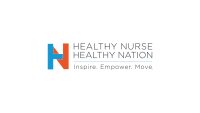Acknowledge your humanity and engage in self-forgiveness.
- Self-compassion is a form of self-care that may help increase joy, job satisfaction, and quality of life as well as decrease stress, anxiety, and burnout.
- Research shows that self-compassion, when practiced for just a few minutes each day, improves healthcare worker resiliency and the ability to sustain compassionate caregiving.
Riley Bonaventure* (they/them), a novice nurse on a step-down unit in a rural critical access hospital, arrives for another busy day on the unit and receives report on seven patients. However, Ted Swellington, a 64-year-old patient with congestive heart failure (CHF) Riley had cared for the day before, isn’t on the list. When Riley asks the night shift charge nurse about this, she informs them that Mr. Swellington had an event overnight and was transferred to a larger healthcare system for a higher level of care. Throughout report Riley remains distracted by the thought that they might have made an error that precipitated Mr. Swellington’s decline.
Riley recalls feeling overwhelmed during their previous shift and ruminated all night over what they might have forgotten to do. They felt frustrated with the care they provided, feeling as if they could have done more, although they did the best they could given the number of patients. Riley completed all assessments, administered all medications, and provided compassionate care during their 12-hour shift; however, the busy seven-patient assignment left them feeling that their nursing care didn’t meet their personal standard of care.
Prevent compassion fatigue through self-compassion
Self-compassion, mistakes, and moral behavior
Nurse training revisited
The American Association of Colleges of Nursing plans to revise nurse training to include self-care behaviors, emotional intelligence, reflection, and situational awareness. Self-care involves providing the love, kindness, and practices needed to maintain one’s mental, physical, emotional, and spiritual well-being. Self-compassion, one modality of self-care, entails directing understanding, love, and kindness inward in the same way one would extend those feelings to another experiencing a difficult time. Individuals who practice self-compassion have greater capacity for extending love and kindness to themselves when faced with failures, inadequacies, mistakes, and stressful situations that may be outside their control.
The nursing profession is built upon the premise that nurses improve the healing process by providing compassion and comfort to others during times of suffering. RNs give their time, energy, expertise, and compassion to patients and their families shift after shift; yet because of nursing’s ethos of resilience and stoicism, most RNs don’t make self-care a priority. However, a person can’t sustain giving care to others unless they also spend time taking care of themselves.
Nurses must learn how to foster self-compassion, as a form of self-care, so they can continue to provide compassionate care to others. Research by Neff indicates that individuals can in fact increase their self-compassion through practice, and some of the studies reviewed by Neff and Germer show that just a few minutes of informal and formal self-compassion practice each day may be enough.
According to Provision 5 of the American Nurses Association’s Code of Ethics for Nurses with Interpretive Statements, “the nurse owes the same duties to self as to others, including the responsibility to promote health.” Although nurses may feel guilty about taking time for themselves, ultimately benefit accrues to the patient. RNs who are calm and present provide a more peaceful and positive environment for their patients.
Self-compassion in action
After report concludes, Riley steps into the breakroom and remembers a self-compassion exercise (compassion with equanimity) their nursing instructor had students practice.
Riley closes their eyes, places their open hand on their heart, and focuses on their heartbeat for a few seconds. Riley then takes three deep breaths, in through the nose and out through the mouth, while quietly saying, “I’m not the cause of the patient’s health problems. I want to alleviate their suffering, but I cannot. It is difficult being a nurse. I’m doing the very best I can, and I’m giving my patients the best care I possibly can at this time. I need to be present, right here and now, so I’m able to continue to provide the very best care I can to my patients today. I’m a good nurse. I would never intentionally do anything to put my patients at risk. I’m not alone in feeling like this. Many nurses feel stretched thin and feel as if they can’t provide the level of care they would like to due to high nurse-to-patient ratios. The most important thing right now is that I forgive myself for any mistakes I may have made yesterday and focus on the tasks at hand today. I’m doing my best and will always practice to the best of my ability.”
Riley takes another deep breath in while imagining that they’re breathing in compassion, warmth, and understanding for themselves as a nurse, and recognizing the difficulty of this caregiving profession. They then imagine that they’re breathing in a golden light that heals their entire body. Next, as Riley remembers the patients they’ll care for today, they breathe out compassion for those patients. They imagine the golden, healing light entering the patients’ bodies and going to every single cell.
As Riley continues with a few more deep breaths, they continue inhaling compassion for themselves and exhaling compassion for their patients. Riley adjusts this ratio as needed, breathing in more compassion for self and exhaling more compassion for patients as needed. Riley feels better after this moment of self-compassion practice and returns to their shift with a clear mind.
Consider this example of self-compassion training as a resource you can use on the job, despite the chaotic environment, to support yourself at the very moment you’re in distress. According to Delaney, nurses participating in an 8-week mindful self-compassion program had significant increases in self-compassion and mindfulness as well as greater resilience and compassion satisfaction. These nurses reported feelings of acceptance and positivity. They felt better able to cope with their work demands while also experiencing less stress and self-criticism. (See Compassion with equanimity.)
Compassion with equanimity
When possible, take time to engage in this self-compassion practice.
- Imagine a person (in your personal or professional life) who you provide care for.
- The situation is stressful. You’re getting tired, and you may be experiencing some burnout.
- Get in touch with the feelings of discomfort or distress you’ve connected with caregiving.
- Remind yourself of the difficulties experienced by the person you care for—their pain and suffering.
- Allow these words of wisdom to drop into your awareness: Everyone is on their own life journey. I’m not the cause of this person’s suffering, nor is it completely within my power to make it go away, even though I wish I could. Moments like these are difficult to bear, yet I will try to help if I can.
- Notice and validate your own distress associated with being a caregiver.
- Put your attention on your in breath—breathe in compassion, understanding, warmth, and kindness for your own struggle as a caregiver. It’s hard.
- You also can imagine that you’re breathing in a golden, healing light that fills your body.
- Recall the image of the person you’re caring for and remind yourself of their struggle.
- As you breathe out, imagine that you’re breathing out compassion for the person you’re caring for and validating their pain. Breath out warmth, care, and concern. Imagine filling their body with a warm, golden light.
- Breathe in for yourself, breathe out for the person you’re caring for. “One for me, and one for you.”
- If you’re really struggling, change the ratio—breathe three in for yourself and one out for the other person.
Riley recognizes later in their shift that they’re still bothered by the thought of Mr. Swellington deteriorating and requiring a higher level of care. They keep replaying yesterday’s shift and interactions with Mr. Swellington. These feelings of inadequacy and self-doubt increase when Riley begins to care for another patient with CHF. Riley worries that they’ll miss something important that will lead to a decline in this patient’s health as well.
Riley remembers they felt better after the self-compassion exercise earlier in the day, but they don’t have time to do that again right now. Instead, Riley recalls something their nursing instructor taught them to do when they need a brief moment of self-compassion under busy circumstances. Riley pauses outside of the next patient’s room before entering to administer medications. They take 15 seconds to clear their head, taking one deep breath and saying, “I feel my feet here on the floor. I’m present and ready to provide compassion and quality care to this next patient. I’m doing the very best I can.” Revisiting this practice as needed throughout the shift allows Riley to focus on each patient’s present needs.
Be your best self
As nurses, we have no control over the fast-paced, ever-changing environments in which we work; however, we do have control over ourselves and how we respond to the stress we’ll inevitably encounter on the job. Self-care, specifically self-compassion, offers protection against the stressors of the nursing profession.
Nursing is a team sport, and each nurse is the most valuable player. We all need to take care of ourselves so we can take the best care of others. Self-compassion can help us acknowledge our humanity and engage in self-forgiveness. It’s also a tactic we can use in the moment to ensure that we’re our best selves for each patient.
*Names are fictitious.
The authors work at St. Bonaventure University in St. Bonaventure, New York. Erin Lundeen is a clinical assistant professor, and Connie Perkins is founding director of nursing.
American Nurse Journal. 2024; 19(9). Doi: 10.51256/ANJ092467
References
American Association of Colleges of Nursing. The Essentials: Core Competencies for Professional Nursing Education. 2021. aacnnursing.org/Portals/42/AcademicNursing/pdf/Essentials-2021.pdf
American Nurses Association. Code of Ethics for Nurses with Interpretive Statements. Silver Spring, MD: American Nurses Association; 2015.
Delaney MC. Caring for the caregivers: Evaluation of the effect of an eight-week pilot mindful self‐compassion (MSC) training program on nurses’ compassion fatigue and resilience. PLoS One, 2008;13(11):e0207261. doi:10.1371/journal.pone.0207261
Germer C, Neff K. Mindful self-compassion (MSC). In Itvzan I, ed. Handbook of Mindfulness-based Programs. London: Routledge; 2020: 357-67.
Neff K. Self-compassion: An alternative conceptualization of a healthy attitude toward oneself. Self Identity. 2003;2(2):85-101. doi:10.1080/15298860309032
Neff K. Self-compassion practices. 2023. self-compassion.org/self-compassion-practices
Neff KD, Germer CK. A pilot study and randomized controlled trial of the mindful self-compassion program. J Clin Psychol. 2003;69(1):28-44. doi:10.1002/jclp.21923
Neff KD, Knox MC, Long P, Gregory K. Caring for others without losing yourself: An adaptation of the mindful self‐compassion program for healthcare communities. J Clin Psychol. 2020;76(9):1543-62. doi:10.1002/jclp.23007
Key words: Self-compassion, self-care


















